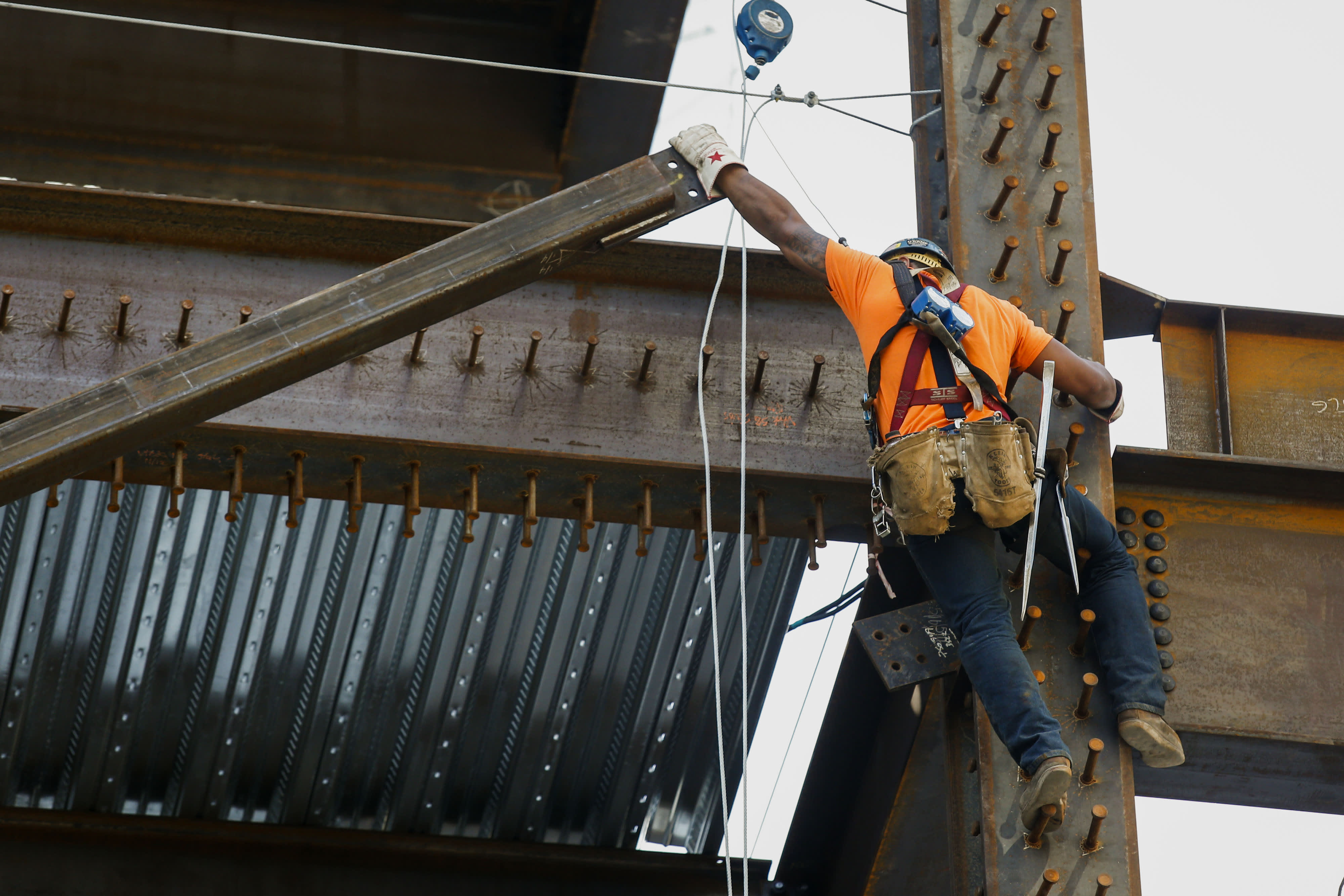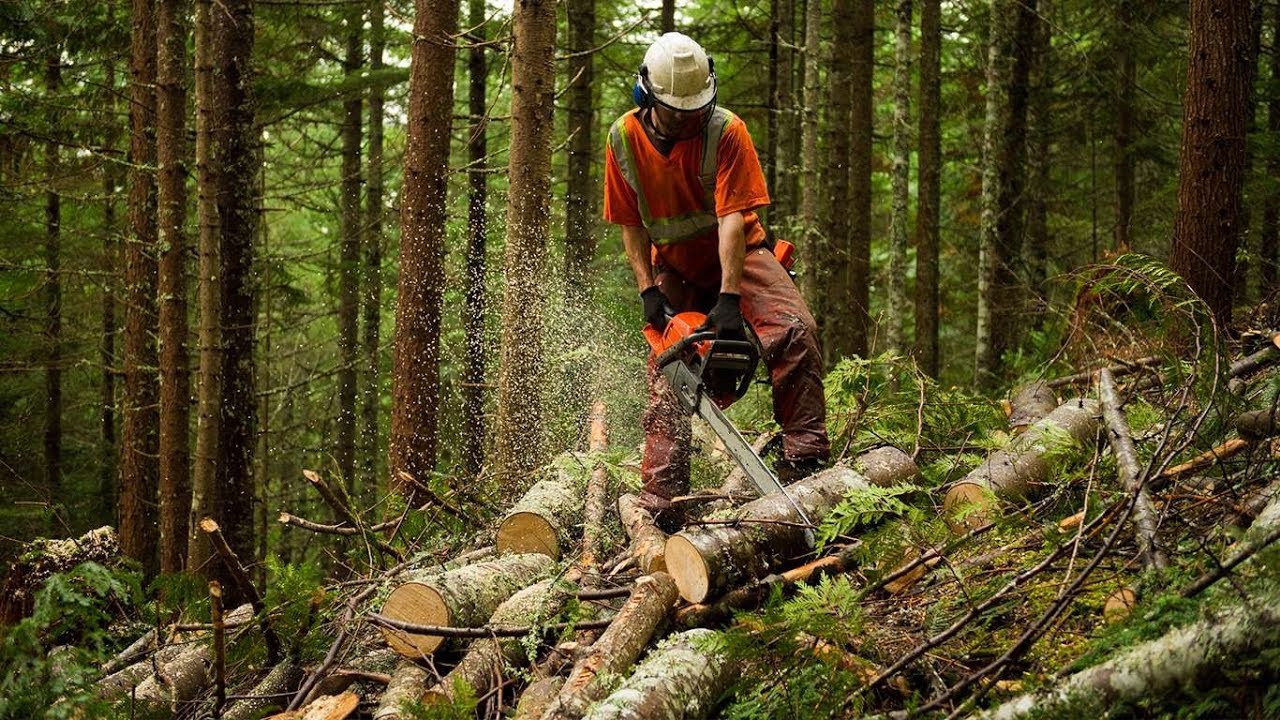Most Dangerous Jobs In America With The Highest Death Rate
Some people define a bad work day as missing a deadline or receiving a reprimand from their manager. Others may experience a serious injury or worse. But, there are some most dangerous jobs in America that are very hard to do.
Author:James PierceReviewer:Paolo ReynaMay 29, 20234.3K Shares288.4K Views

Some people define a bad work day as missing a deadline or receiving a reprimand from their manager. Others may experience a serious injury or worse. But, there are some most dangerous jobs in Americathat are very hard to do. Have a look.
According to recent datafrom the Bureau of Labor Statistics, there were 5,250 workplace fatalities in 2018, a modest rise from 2017. The fatal occupational injury rate remained constant at 3.5 per 100,000 employees.
According to Ken Kolosh, the National Safety Council's statistics manager:
“„We’re treading water when it comes to worker safety. We need to do a better job of protecting workers. Death on the job is not what it should take to get the job done.- Ken Kolosh

Top 25 Most Dangerous Jobs in America
Nevertheless, it is the moral (and legal) duty of employers to maintain a secure workplace. Based on the data, the following are the most dangerous jobs in America:
Logging Workers
- Number of fatal injuries per 100,000 workers: 111
- Total fatalities in 2018: 56
- Earnings: $41,230
- Contact with equipment and things causes the majority of fatal accidents.
Logging is the riskiest job in America. The fatal accident rate among loggers was 33 times higher than the national norm.
In order to produce things like wood, paper, and cardboard as well as other industrial goods, logging employees harvest trees. The majority of their time is spent outdoors, in remote forests and other settings.
Heavy machinery is used by loggers to cut trees and handle logs. Contact with logging equipment or logs is the most common cause of logging worker fatalities.
Aircraft Pilots And Flight Engineers
- Injuries resulted in 53 deaths per 100,000 workers.
- (2018) total fatalities: 70.
- A wage of $121,430.
- Most frequent fatalities: Transport-related mishaps
Pilots of aircraft control and fly planes, helicopters, and other kinds of aircraft. In their line of work, pilots are in charge of arranging for fuel and making flight plans as well as inspecting the condition of the aircraft before and after flights.
In addition to flying the aircraft, pilots also control it, interact with air traffic control, and keep an eye on its systems while in flight. Most pilots die in crashes involving privately owned planes and helicopters, not commercial jets that fly on a regular schedule.
Derrick Operators In Oil, Gas, And Mining
- Includes people who work with derricks, rotary drills, and service units in oil, gas, and mining.
- The rate is 46 fatal injuries per 100,000 workers.
- 20 fatalities overall in 2018
- Payment: $51,390
Transportation mishaps and item and equipment contact are the most common causes of death. The derricks and drilling machinery used to extract oil and gas and mine for materials are put up, maintained, and operated by these oil workers.
The building atop a well that houses the drilling apparatus and rotates to move the ground is called a derrick. Pumps to draw oil or other resources from the well may be part of the derrick.
The two main causes of mortality for these workers were transportation accidents and collisions with objects and equipment.
Roofers
- Number of fatal injuries per 100,000 workers: 41
- (2018) total fatalities: 96
- Wage of $42,100
- Trips, slips, and falls are the most common fatal accidents.
Roofs on homes and structures must be installed, repaired, and replaced by roofers. They are responsible for placing and securing roofing materials on roofs, such as shingles, metal, or other materials.
In most cases, roofers need to utilize ladders or other tools to ascend to the top of buildings. Falling off roofs or ladders is the most frequent cause of fatal work injuries for roofers.
Garbage Collectors
- Number of fatal injuries per 100,000 workers: 34
- (2018) total fatalities: 37.
- Wage of $42,100.
- Transport-related mishaps are the most frequent fatal accidents.
Refuse and recyclable material collectors, sometimes known as garbage collectors, gather our waste. Typically, this personnel will operate a truck through residential areas, filling trash cans and dumpsters as they go.
In contrast to certain vehicles that have mechanical lifters, many bins are loaded by hand. The waste is subsequently removed from the trucks and taken to a landfill or waste transfer station.
Being hit by a garbage truck or other vehicle is the most frequent cause of death for these workers.
Ironworkers
- Mortality rate per 100,000 workers: 29
- (2018) total fatalities: 15
- Payment: $53,650
- Trips, falls, and slips are the most common causes of death.
Installing steel and iron on structures including buildings, bridges, and highways is the responsibility of ironworkers. They frequently work by scaling tall structures, unloading iron and steel, and communicating with crane operators.
They also employ machinery for cutting, bending, and welding steel and iron. Steel and iron are important reinforcing materials in large-scale constructions. For those who work with structural iron and steel, falls are the most common cause of fatal workplace accidents.
Delivery Drivers
- Death rate per 100,000 workers: 27
- Total fatalities in 2018: 966
- wage of $29,610
- Most frequent fatalities: transportation-related mishaps
Deliveries are made by drivers who load and unload vehicles before driving them locally. These workers typically transport freight, food, laundry, or other items to homes, businesses, or distribution facilities.
Additionally, they could get in touch with clients to arrange deliveries, collect money for purchases, and handle paperwork like delivery signatures. For truck drivers and salespeople, traffic accidents are the primary cause of workplace fatalities.
Farmers
- Death rate per 100,000 workers: 26
- (2018) total fatalities: 257
- Wage of $71,160
- Transport-related mishaps are the most frequent fatal accidents.
Farmers are in charge of growing crops, making dairy products, and keeping livestock. They are in charge of the farming operations, including planting, harvesting, and livestock feeding and care.
Farmers also buy materials for their farms as well as buy and maintain farming machinery. On the open market, they can also sell their cattle or produce. The most frequent cause of death for farmers was accidents, notably tractor accidents.
Firefighters Supervisors
- Injuries cause 20 deaths per 100,000 workers.
- Total fatalities in 2018: 14
- Wage of $82,010
- Transport-related mishaps are the most frequent fatal accidents.
The work of firefighters must be supervised and coordinated by firefighting supervisors. Fire suppression and prevention are part of this work.
These supervisors' duties also include communicating with and dispatching emergency vehicles, assessing the magnitude and severity of fires, and hiring, evaluating, and maintaining firefighters.
Traffic accidents are the most common way that firefighting supervisors die on the job, followed by fires and explosions.
Power Linemen
- Injuries cause 20 deaths per 100,000 workers.
- (2018) total fatalities: 29
- Wage of $71,960
- The most common cause of death is exposure to unfavorable elements or chemicals.
Installing and maintaining the overhead and underground power lines that supply homes and businesses with energy is the job of power linemen.
These employees test, install, or otherwise maintain electrical equipment while driving power maintenance equipment to job locations, climbing electrical poles, or making use of bucket trucks.
Electrocution is the leading cause of death among power line workers.

Top 10 Most Dangerous Jobs in The United States.
People Also Ask
What Is The #1 Most Dangerous Job In America?
Fishing and hunting workers are the #1 most dangerous job in America.
What Are The 10 Most Dangerous Jobs In America?
- Motor vehicle operator.
- Construction staff.
- Agricultural staff.
- Grounds maintenance worker.
- Retail sales workers.
- Vehicle and mobile equipment mechanic, installer, or repairer.
- Roofer.
What Are The Top 3 Most Dangerous Jobs?
- Aircraft pilots and flight engineers.
- Logging workers.
- Derrick operators in oil, gas, and mining.
What Job Has The Highest Death Rate?
American logging is the most hazardous occupation. The national average for all occupations had a fatal accident rate that was 33 times higher for loggers.
Conclusion
In this article, we've compiled the most dangerous jobs in America. Transportation accidents accounted for over 2,000 workplace fatalities, making them the most frequent cause of workplace fatalities. This accounts for 40% of all workplace fatalities.
Contact with objects and equipment was the second most frequent cause of occupational fatalities, increasing by 13% to 786 instances in the previous year.
The rise was due to a 39% increase in workers caught in moving machinery or equipment and a 17% increase in workers struck by falling objects or equipment.

James Pierce
Author

Paolo Reyna
Reviewer
Latest Articles
Popular Articles